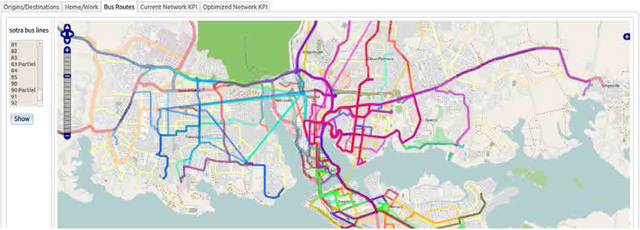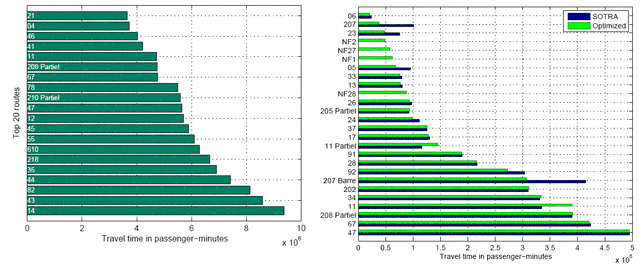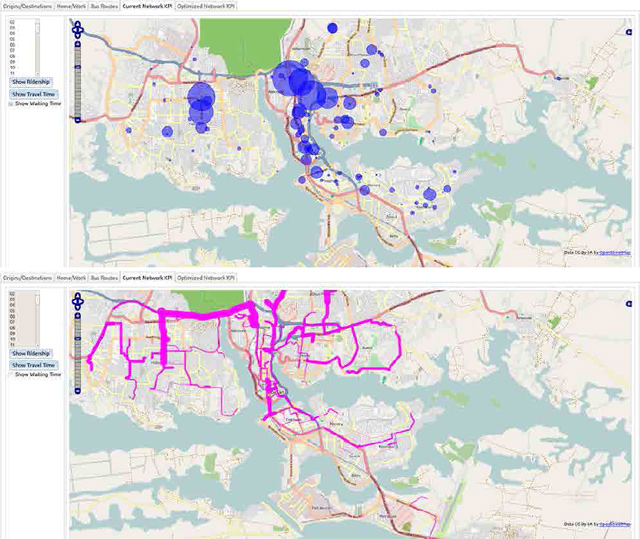Optimization of public transport after analyzing GSM data
 A group of researchers from IBM, using information on the movements of 500 thousand mobile users, developed a model for improving public transport routes.
A group of researchers from IBM, using information on the movements of 500 thousand mobile users, developed a model for improving public transport routes. The model was successfully tested in the city of Abidjan (population 3.8 million people, the capital of Côte d'Ivoire). The illustration shows the current bus routes (crimson) and the improvements offered by the algorithm (blue). He suggested 65 possible improvements, including three new routes, with a total time savings of 10% in passenger minutes for all passengers, given the travel time and waiting time.
The new algorithm is useful not only for optimization, but also for laying new routes in the newly built neighborhoods. Here he clearly shows in what ways, at what time and in what volume the mass of people moves. You can make the best routes and transport schedules. The fact of the emergence of a new tool that the city authorities can use to optimize the infrastructure of the metropolis is important.

85 SOTRA public transport routes in Abidjan
Each owner of a cell phone acts as an individual sensor on the network. Information from the sensors is collected by the mobile operator and analyzed. In this case, information about calls to the Abidjan cellular network from December 2011 to April 2012 was provided by Orange. The database includes 2.5 billion records and today is the largest database of its kind available for research. Naturally, the database is cleared of any personal information: all statistics are anonymous.

Density of users, by place of residence (left) and place of work (right)
In Abidjan, the transport connection consists of 539 buses in the SOTRA network, 5,000 minibuses and 11,000 public taxis. The authors of the scientific work used information on calls and SMS from 500 thousand mobile phones. During each call, the operator stores information about the base station, which serves the subscriber, which allows to determine its coordinates with sufficient accuracy. The movement of the phone is recorded if subsequently it begins to serve another cell.

Comparison of the time before and after optimization of SOTRA routes, in hundreds of thousands of passenger-minutes for the entire passenger flow
Generally, such “real-time tracking” can be very useful. For example, even crime prediction algorithms are created based on information from a cellular network.. If this IBM algorithm is used not on historical data, but on real-time information, then theoretically it is even possible to quickly edit the public transport schedule, instantly responding to an increase in human traffic along certain routes.
The data processing algorithm called AllAboard was made by specialists from the IBM Research Dublin laboratory participating in the Data for Development program . The final report “AllAboard: a system for exploring urban mobility and optimizing public transport using cellphone data” was presented at the NetMob 2013 conference , which is dedicated to the processing of databases from cellular networks.

Average waiting time for vehicles at stops (above) and passenger density along different routes (below)
You can familiarize yourself with the scientific work in the conference proceedings (pdf) , pp. 397–411.
